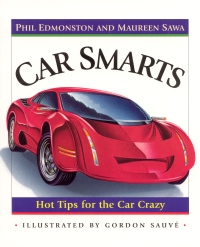| ________________
CM . . .
. Volume XI Number 8 . . . . December 10, 2004
excerpt: In 2003, for the first time in history, the average American household had more cars than drivers, according to a report from the U.S. Department of Transportation. And by 2020, according to projections,15 percent of the world's people, double the current figure, will own a vehicle! Even with diminished fuel emissions, the impact of that many cars on the planet's climate will be devastating, especially when you consider that automobiles are now responsible for up to two-thirds of all urban smog and one-quarter of the carbon dioxide in our air. Then there's the question of fuel supply. Automobiles were invented shortly after the discovery of huge oil fields in the United States and other countries. At the time, the oil supply seemed endless. But production is already slowing down, and oil-rich countries are using the resource as a political weapon, which could make reliable supplies a problem in the future. And even if the supply was more reliable, with the dramatic increase in sales expected in emerging markets such as China, Brazil, India, and Russia, there's simply not going to be enough oil available to fuel cars in the traditional way. Car Smarts blends enthusiasm for automobiles with understanding of the social, economic and environmental impact of cars. This is a thoughtful celebration of things automotive that includes loads of practical advice. Car Smarts informs readers about the history of motorized transportation and provides technical explanations of how cars work, but it's also a manual for how to purchase a car. Perhaps the best recommendation of all is for would-be drivers to start their quest for wheels by reading up at the public library. The book is text-heavy but replete with full-colour illustrations on virtually every page. Difficult concepts, including how a transmission functions and the stroke cycle of the modern internal combustion engine, are clearly explained and accompanied by simple and effective illustrations. Even so, the writing can be dense and technical. This book will appeal most strongly to readers who are already car enthusiasts. Fortunately, the book includes a glossary and index, making it a good source to answer specific questions about cars even for those who lack the interest or determination to read the entire book. Readers will welcome the frequent pauses offered by boxed text, top-ten lists and sidebar statistics. These present tidbits of trivia including explanations of that "new car smell" and why modern cars don't have fins, or eminently practical information including checklists of what to look for in a good car and inspection techniques to identify potential problems. The book is well designed, with an attractive layout and a balance of main text, illustrations and sidebars. Readers at the top of the age range may be slightly put-off by the frequent use of cartoonish illustrations instead of photographs. The writing is clean, factual and thorough throughout. The authors' credentials are impeccable: Phil Edmonston is a leading consumer advocate and author of the best-selling Lemon-Aid car guides. Maureen Sawa is Coordinator of Adult Services and Information for the Hamilton Public Library. Together they have crafted a smart, information-rich book that could be read with profit by anyone seeking to buy a new car. Don't let the age and grade recommendations fool you: this one is for all of us. Highly Recommended. Greg Bak is an Information Specialist at the Canadian Coordinating Office for Health Technology Assessment. He always visits his public library before making a major purchase.
To comment
on this title or this review, send mail to cm@umanitoba.ca.
Copyright © the Manitoba Library Association. Reproduction for personal
use is permitted only if this copyright notice is maintained. Any
other reproduction is prohibited without permission.
NEXT REVIEW |TABLE OF CONTENTS FOR THIS ISSUE
- December 10, 2004.
AUTHORS
| TITLES | MEDIA REVIEWS
| PROFILES
| BACK ISSUES
| SEARCH | CMARCHIVE
| HOME |
